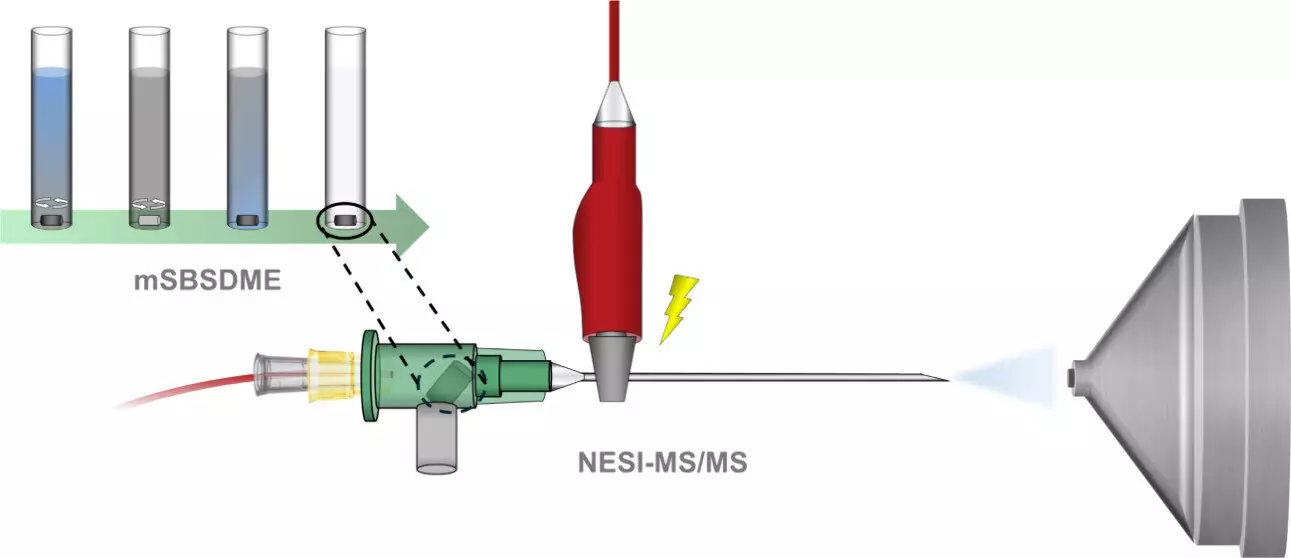Recent developments by researchers at the Universities of Córdoba and Valencia have turned the traditional paradigm of cannabis testing on its head. With the rise in cannabis use across Europe—around 8% of adults reportedly consumed the substance in 2022—quick and efficient testing methods are desperately needed. The breakthrough involves an innovative saliva-based testing method capable of detecting Tetrahydrocannabinol (THC) with minimal sample requirements. This is a significant stride forward in addressing the public health concerns associated with cannabis misuse.
Historically, detecting THC in biological samples has involved extensive procedures that are both time-consuming and resource-heavy. The newly designed technique drastically reduces the steps required from five to merely two, promising high throughput and efficiency. Not only does this development reflect technological innovation, but it also aligns with a growing trend favoring non-invasive testing approaches. This aligns seamlessly with public health goals, as easy-to-administer tests can enhance monitoring and regulation without compromising individual privacy.
Breaking Down the Methodology
The method implemented by the collaborative research teams utilizes a process known as dispersive microextraction by sorption. This sophisticated technique begins with the introduction of a magnetic material that interacts with THC molecules present in just 0.25 mL of saliva. The magic happens when a small stirrer magnet is used to create a vortex within the sample, facilitating the extraction of THC particles.
Jaime Millán Santiago, a researcher involved in developing this method, describes the process as both simple and efficient. By leveraging the principles of magnetism, researchers have devised a system that pulls the extracted THC back into a manageable form for analysis after the agitation stops. This innovative approach not only streamlines the preparatory stages but also enhances the likelihood of obtaining accurate results.
But it doesn’t end there. The extracted THC is then transferred to a special needle where a high-voltage electrospray is generated. This triggers the release of THC for mass spectrometry—the analytical technique used to quantify THC levels in the saliva. The ability to complete these steps within minutes profoundly impacts the feasibility of routine testing in various settings, from hospitals to law enforcement.
The Importance of Non-Invasive Testing
The public attitude towards cannabis testing must be considered in light of shifting social norms. As cannabis becomes more integrated into everyday life, from medicinal prescriptions to recreational use, the demand for convenient and non-invasive testing methods has surged. Saliva testing meets this need by providing a less intrusive alternative to blood or urine tests, which can lead to a more widespread acceptance of cannabis testing protocols.
This research also opens doors for addressing potential health concerns related to cannabis misuse. Rapid detection of THC levels can aid in making informed decisions regarding treatment, rehabilitation, and even driving regulations. Thus, it serves not only as a tool for law enforcement but also as an important resource for healthcare practitioners working toward mitigating the health impacts of cannabis dependence.
Furthermore, this detection method’s potential to be integrated into existing laboratory routines is a powerful argument in favor of its broader adoption. Highlighting the affordable and sustainable nature of the materials—like stainless steel needles—ensures that this technology could be cost-effective, making it accessible to a variety of clinical settings.
Challenges and Future Directions
Though this groundbreaking technique presents numerous advantages, the adoption of novel testing methods is seldom without challenges. Awareness and training among professionals will be crucial for transitioning to this innovative method. Additionally, future studies must address the possibility of false positives and negatives, which are paramount in forensic settings.
Moreover, as regulations surrounding cannabis usage continue to evolve, the technology must adapt accordingly. This includes solving issues related to varying THC metabolization rates among individuals, necessitating a more nuanced approach toward interpretation of results. Developers and researchers must remain vigilant and proactive, refining their methods in tandem with new discoveries in cannabinoid science.
The testing developments from the Universities of Córdoba and Valencia embody a shift toward practical and user-friendly methods in cannabis analysis. The efficacy of this innovative saliva-based testing could pave the way for revolutionizing not just cannabis detection, but the broader landscape of drug testing altogether. As societal norms evolve and technology continues to advance, the future of THC analysis looks remarkably promising.


Leave a Reply